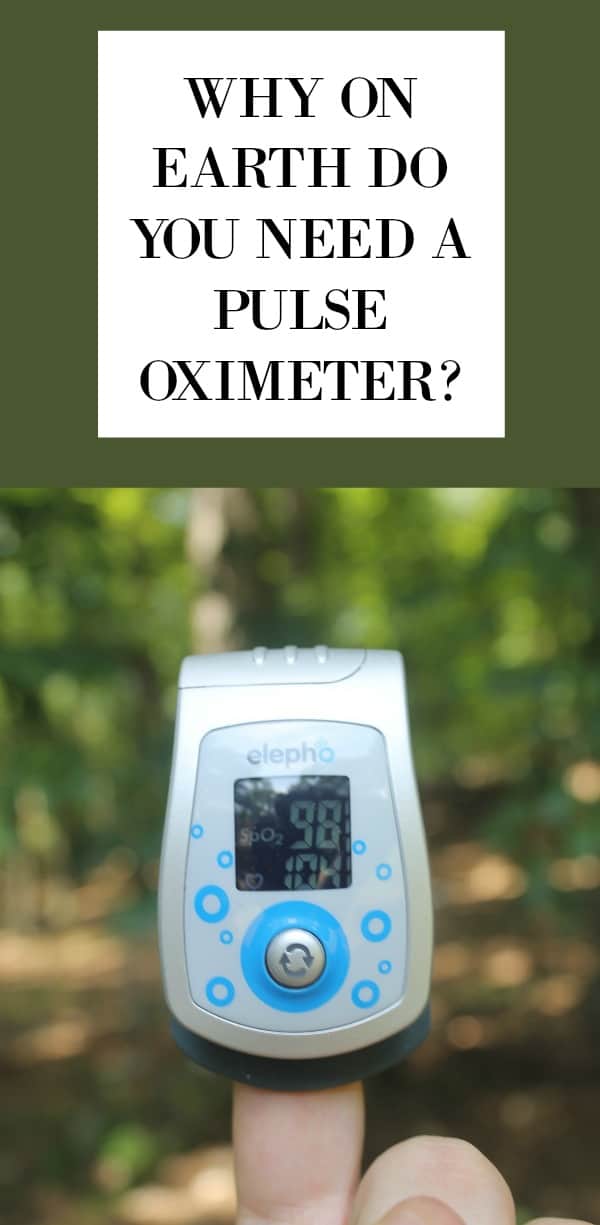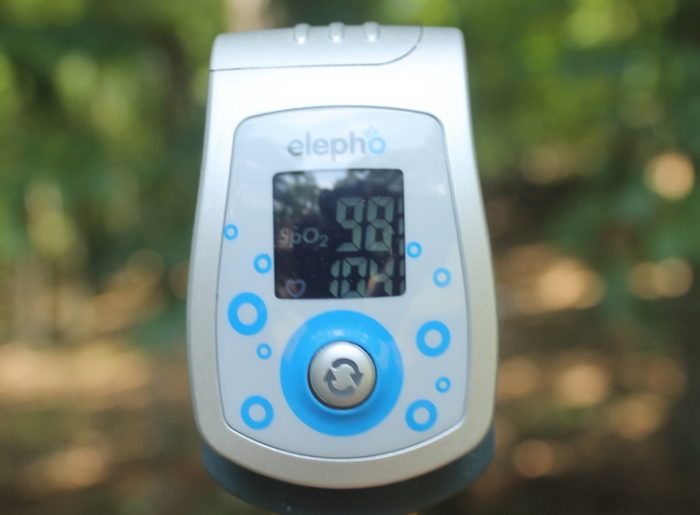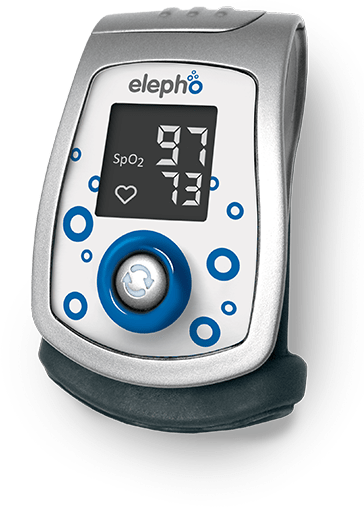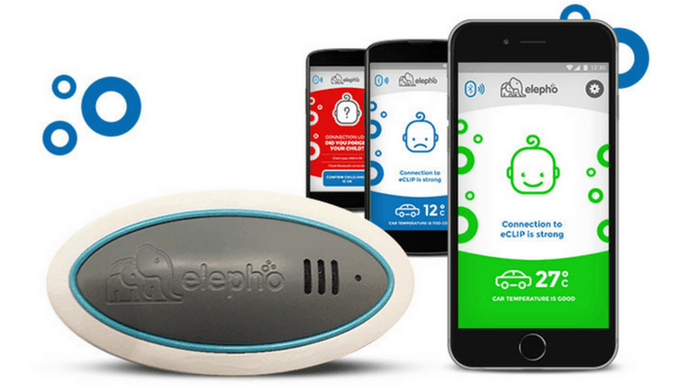Do you have a pulse oximeter in your home? No? Why not? Seriously, it’s something every home should have as part of a basic first aid kit! Today I’m going to tell you a little about why you need one and share a little about my personal favorite pulse ox monitor, the eCheck by Elepho. Keep reading, because you’ll have a chance to win one of your own! I’ll also tell you a little about a really cool and incredibly important tool developed by Elepho to make sure no child is ever left behind in a hot car again.
Okay, let’s start with the pulse oximeter, shall we? A little housekeeping first. Elepho did send me their eCheck in exchange for an honest review. Of course, all opinions are my own, and I totally wanted my very own pulse oximeter anyway. Also, I am not a doctor. A former nursing student, yes, but not a doctor. Not even an actually nurse, since I didn’t finish school. I am not qualified to give you medical advice. The internet as a whole is not qualified to give you medical advice. If you have medical questions, talk to a medical professional. Makes sense, right?
What is a pulse oximeter and how does it work?
If you’ve ever been to a doctor or hospital,. you’ve seen a pulse oximeter, but do you know what it actually does? A pulse oximeter is a little non-invasive device that measures both your heart rate and the level of oxygen in your blood. You just pop it on your finger, hit the “on” button, wait a second, and read the numbers on the little screen. The top number, labeled Sp02, tells you your pulse ox, or how much oxygen the device detected coursing through your blood stream. The bottom number, which usually has a little heart next to it, is your heart rate.
I apologize for the reflection in my picture above. I took it outside so the flash wouldn’t reflect, and instead the trees did. I wanted to give you a good example though of what the numbers look like. As you can see, my pulse ox is pretty good at 98%. While you should check with your doctor to find out your personal “healthy” level, generally speaking, you want that number to fall at 95% or above. Doctors really get concerned when it falls at 90% and below. When I was a student, we put our patients on oxygen when it fell below around 92%, but based on my reading, many doctors will let it get to 90% and Medicaid will pay for O2 when it hits 88%. Like I said, you need to talk to your doctor about your results.
If you look at my heart rate, you’ll notice that it’s a bit high. The average healthy adult ranges between 60-100 beats per minute. A second before I took this picture, mine was up to 112. I have been in a lot of pain lately with my back, so that can drive up the rate. Again, you need to talk to your doc about your healthy heart rate. If you’re an extremely active athlete, your resting rate could be lower than 60 BPM, while if you’re in near constant pain like me, it could be higher than 100.
Why do you want an eCheck from Elepho?
Now that we have a better understanding of how a pulse oximeter works, let’s take a look a the benefits of having one. Now, maybe you’re wondering “why eCheck by Elepho?” Well, honestly, it’s the first one I’ve ever had for home use. However, I’ve used other brands in nursing school and in hospitals. I like eCheck for a few reasons.
First, it’s sturdy. Most of the ones I’ve worked with just feel flimsy, like they’ll fall apart easily. Second, eCheck actually stays on your finger. When I was in the hospital, I had to replace my own pulse oximeter a million times because it kept falling off. After a while, most designs just lose their ability to grip properly. eCheck is designed in such a way that it slides on and stays on. Okay, now that we have that out of the way, let’s talk about why you should have one in your home!
- Knowing how hard to push yourself during exercise: if you’re just starting a new workout, it’s important to not push too hard. Knowing your pulse ox and heart rate can help you find that sweet spot faster!
- Monitoring for hypoxia: if you have COPD, are traveling to high altitudes (or climbing a mountain!), or dealing with a bout of pneumonia, being able to monitor your oxygen levels (and report them back to your doctor) can save your life. Talk to your doctor about how to do this!
- Easing anxiety attacks through the O2 stats: Ever feel like you just can’t breathe? Like you’re not getting enough oxygen? Like the walls are closing in, the earth is crumbling, the sky is falling? You could be having a legit medical crisis…or you could be having a panic attack. When I panic (which is more often than not these days), I feel like I am deprived of oxygen and my lungs are collapsing. Popping on the eCheck and seeing that my O2 is still at 98% helps me realize that I’m not actually dying. That, in turn, helps me calm down a bit and push back against my panic.
- Easing panic with the heart rate monitor: The heart rate monitor also helps me push back against panic. When I’m in full-on freak-out mode, my HR is usually up there in the 115+ range. I find a quiet place, breathe deeply, and focus on getting the number down. It really helps me calm myself a bit.
- Biofeedback for chronic pain: I don’t know a lot about using biofeedback yet, but I kind of made up my own version using my eCheck. When my HR is sky high and I know I’m not having a panic attack, I lay down and focus on the different parts of my body that are experiencing pain. Have you ever noticed that when you have a headache, it feels like your entire head hurts? Or when you have back pain, it spreads across the whole back? Well, I’m trying this new thing that I call “localizing the pain.” I lay still and focus on the pain as a whole. Then I mentally “push” it in, searching for the true source. I keep an eye on my heart rate as I do this. Sometimes, I’m able to “push” the pain into one spot. Sure, that one spot hurts like a whole lot of really bad words, but it’s easier to ice one tiny spot of your back or head than the whole thing. Give it a try. It may work for you, it may not.
These are just a few benefits of having a pulse oximeter around for the average, everyday person. I’m sure there are more! If you can think of any, I’d love to know. Basically, you can use the eCheck for any reason that you would want to know your heart rate or oxygen level.
Remember way back at the top of this post I mentioned that Elepho was working on another really cool device that would help parents stop forgetting their kids in the car? Well, here it is! It’s called the eClip. Elepho ran a Kickstarter for it and surpassed their goal. They are now taking preorders. Get it now and save $20 off. Check out the video to learn how it works.
With the number of kids being left in cars unattended every year (some with fatal consequences), I think this is really something every parent needs. I honestly do not believe that any parent means to forget their baby in a hot car. The word “forget” alone indicates something done unintentionally. It’s hard for most of us to imagine how it can happen, I know. We think “we would never, ever forget our baby!” I bet those parents who lost their kids thought the same thing.
Visit Elepho to learn more about all of their products! Check out the Elepho‘s Facebook page to keep up with their news!







Good device
I would give it to my grandma to use!
name: edye
mia2009(at)comcast(dot)net
I would keep it around the house because I have a few chronic illnesses that greatly affect my quality of life. This could be beneficial for me to keep!
As a nurse practitioner in Pediatrics, I’ve worked with children in foster care, and, having seen disastrous results of accidents and “forgetting,” I heartily recommend this product to every parent and caregiver.
I think this would be great to have to check my daughter’s O2 levels when she is sick!
I would use the home elepho e-check because I have a sick daughter and husband that I am giving care to on a daily basis.This would give me some peace of mind.Thanks so much for the chance. 🙂
To mesure oxigen after sport
I have been thinking about getting a pulse oximeter for a while now. BUT I don’t know anything about them and what would be the right one at the right price for me. I have COPD so it would nice to have